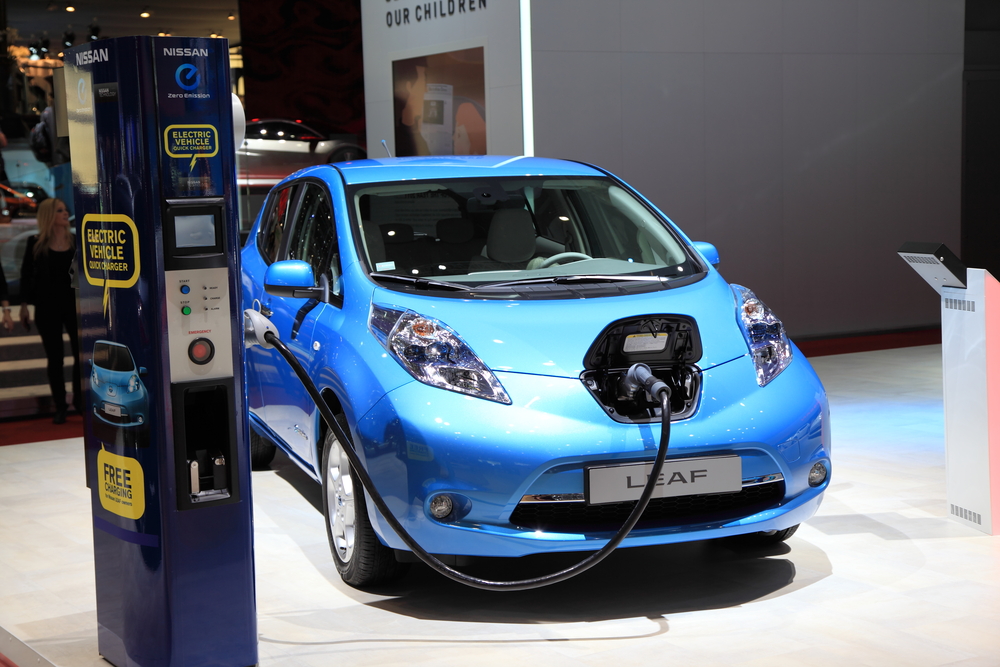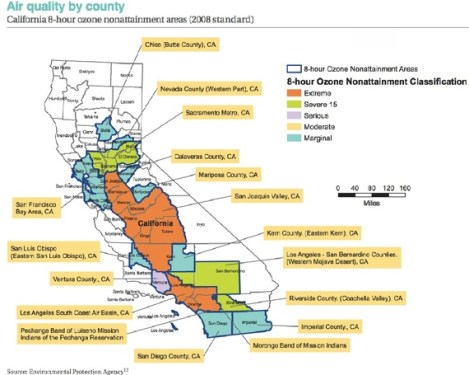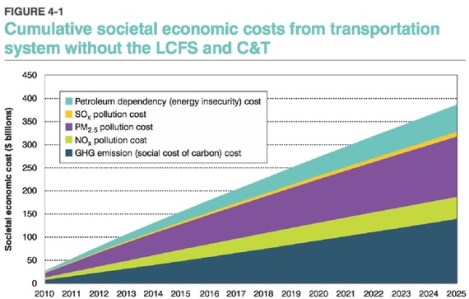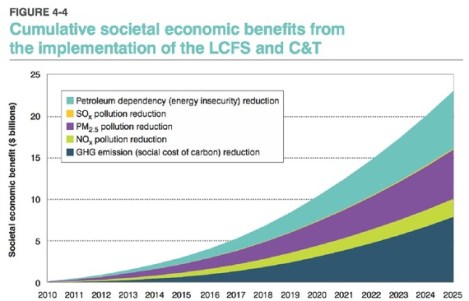The failure to persuade a sizable percentage of Americans that climate change poses a clear and present danger is one of the great failures in marketing and the subject of considerable debate among scientists, academics and politicians. But there is one argument for taking action against global warming that has resonated: health.
When the Koch brothers and two Texas oil companies bankrolled a California ballot initiative in 2010 to gut the state’s landmark global warming law, billionaire activists activist Tom Steyer and his allies defeated the measure in part by arguing not that it would lead to climate catastrophe but would harm Californians’ health by allowing petroleum giants to pollute while keeping smog-creating cars on the road.
Now there are some hard numbers to back up those claims. A study released this week by the Environmental Defense Fund and the California chapter of the American Lung Association analyzed the impact of California’s cap-and-trade emissions program — which aims to reduce greenhouse gas emissions to 1990 levels by 2020 — as well as the state’s Low Carbon Fuel Standard (LCFS), which mandates a 10 percent reduction in the carbon intensity of transportation fuels by 2020.
“By 2025, the health benefits of the LCFS and [cap-and-trade] will save $8.3 billion in pollution-related health costs such as avoided hospital visits and lost work days,” the report states. “In addition, these policies will prevent 38,000 asthma attacks as well as 600 heart attacks, 880 premature deaths, and almost 75,000 lost work days — all caused by air pollution.”
An environmental consultant, Tetra Tech, analyzed the future emissions of California’s more than 30 million cars if the climate change laws were not in place as well as the reduction in emissions if the laws are fully implemented.
The impact is considerable. Transportation accounts for nearly 40 percent of California’s greenhouse gas emissions, with two-thirds of those carbon emissions from passenger cars. Vehicles are also responsible for 70 percent of the state’s smog, and as a result California still has some of the United States’s worst air pollution — 80 percent of the population lives in areas defined as having unhealthy air, according to the U.S. Environmental Protection Agency.
This chart shows the cost of doing nothing:
And this chart represents the potential savings from California’s efforts:
As impressive as those savings are, they’re based on a relatively small conversion — 11.3 percent to 18.8 percent — of California’s cars to run on carbon-free or low-polluting fuels.
Now imagine if there were a Tesla in every garage.
 This story was produced by The Atlantic as part of the Climate Desk collaboration.
This story was produced by The Atlantic as part of the Climate Desk collaboration.






